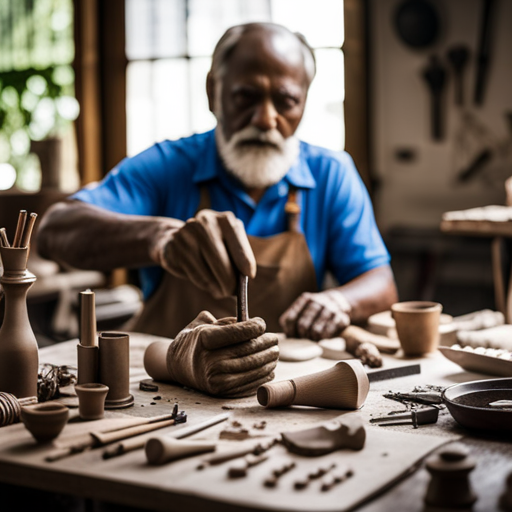Creating Seamless Costume Transitions for Stage

Time is of the essence, especially when it comes to seamless costume transitions on stage. Behind every flawless change lies careful planning, precise coordination, and quick execution.
From organizing costume change stations to implementing advanced technology, this article explores the essential strategies for creating effortless transitions.
Whether you’re a performer, costume designer, or stage crew member, mastering these techniques is crucial for maintaining the magic of theater while ensuring a smooth and captivating performance.
Understanding Costume Change Timing
Understanding the precise timing of costume changes is essential for maintaining the seamless flow of a stage production. Backstage organization plays a crucial role in ensuring that actors have adequate time to change costumes between scenes without causing delays in the performance. The timing of costume changes must be meticulously planned and rehearsed to avoid disruptions to the production. This involves coordinating with stage managers, dressers, and actors to establish efficient transition schedules.
The backstage team must work in unison to maintain the rhythm of the performance. Understanding the timing of each costume change is imperative to prevent any mishaps that could potentially derail the production. It requires a harmonious blend of precision and flexibility to accommodate unexpected circumstances without compromising the overall timing of the costume changes.
Efficient backstage organization is the linchpin of successful costume change timing. A well-coordinated system ensures that actors have the necessary support and resources to execute quick and seamless costume changes. This involves establishing designated areas for costume changes, ensuring the availability of necessary attire, and implementing clear communication channels among the backstage crew. Without effective backstage organization, the timing of costume changes can become chaotic and jeopardize the professionalism of the production.
Organizing Costume Change Stations
To ensure smooth costume transitions during a performance, it is crucial to establish efficient layout and signage at the costume change stations.
Additionally, clear communication systems need to be in place to relay important information to the cast and crew regarding timing and any last-minute adjustments.
These points play a significant role in streamlining the costume change process and minimizing potential disruptions during the production.
Efficient Layout and Signage
The efficient layout and signage of costume change stations significantly impacts the smoothness of transitions during stage performances.
Efficient organization of costume change stations involves arranging them in a logical sequence according to the flow of the performance. This ensures that performers can move quickly and seamlessly from one station to the next.
Helpful signage should be prominently displayed at each station, clearly indicating which costumes are to be worn and in what order. Additionally, using numbered or color-coded signs can further streamline the process, allowing performers to locate their designated stations with ease.
Clear and concise signage is essential for minimizing confusion and reducing the risk of mistakes during quick changes. Ultimately, a well-organized layout and effective signage contribute to the overall success of costume transitions in a stage production.
Clear Communication Systems
Efficient layout and signage are integral to the clear communication systems necessary for organizing costume change stations during stage performances. To ensure smooth transitions, backstage coordination should include the following:
- Clearly labeled stations for each costume change, indicating the order of changes.
- Assigned dressers for each station who are familiar with the quick-change process.
- Established communication protocols, such as using headsets or hand signals, to convey timing and readiness for the next scene.
- Backup plans in case of unforeseen circumstances, such as a costume malfunction or a delayed performer.
By implementing these strategies, the backstage crew can work together seamlessly to facilitate swift and precise costume changes. This efficient communication and organization are essential for a successful performance.
Now, let’s delve into the subsequent section about ‘utilizing quick-change techniques’.
Utilizing Quick-change Techniques
One must master the art of utilizing quick-change techniques to achieve seamless costume transitions on stage. Quick change essentials and backstage organization are crucial for executing swift costume changes. This includes having costumes prepped and organized in the order they will be changed, ensuring all necessary props and accessories are readily available, and having a designated quick-change area with adequate lighting and space for performers and dressers to efficiently work together.
Costume change strategies play a significant role in achieving seamless transitions. This involves utilizing specialized fastenings such as magnets, snaps, and hooks instead of traditional buttons or zippers, as well as employing pre-set costumes with hidden openings for easy access. Additionally, incorporating Velcro, elastic, and quick-release buckles can expedite the changing process.
Rehearsing quick changes is essential to perfecting the timing and coordination required for flawless transitions. By implementing these techniques and maintaining a well-organized backstage area, performers can confidently execute quick changes, ensuring a seamless and polished production.
Implementing Technology for Effortless Transitions
To enhance the efficiency of costume transitions, integrating technology into the quick-change process can streamline the backstage operations, ensuring seamless shifts between costumes. This can be achieved through:
-
Costume automation: Utilizing automated systems to trigger costume changes at precise moments, reducing the margin for error and ensuring timely transitions.
-
Seamless integration: Implementing technology that seamlessly integrates with the overall production, including stage cues and lighting, to synchronize costume transitions with the performance seamlessly.
-
RFID tracking: Using RFID technology to track the movement of costumes and ensure they are in the right place at the right time, minimizing the risk of misplaced or missing garments.
-
Digital cue management: Employing digital cue management systems to coordinate costume changes with other backstage activities, such as set movements and prop placements, for a harmonized and efficient production flow.
By incorporating these technological advancements, productions can achieve flawless costume transitions, allowing the focus to remain on the performance itself. This seamless integration of technology into the quick-change process sets the stage for a well-coordinated and polished production, ensuring that the audience experiences a captivating and uninterrupted performance.
In the subsequent section, we will delve into the crucial aspect of coordinating with the stage crew and cast to execute these seamless costume transitions effectively.
Coordinating With Stage Crew and Cast
Effective coordination with the stage crew and cast is crucial for seamless costume transitions.
Clear communication is essential to ensure that everyone is on the same page and understands their roles during the transitions.
Timed rehearsals can help minimize errors and ensure that costume changes happen smoothly and without disruption to the performance.
Clear Communication Essential
Clear communication with the stage crew and cast is essential for seamless costume transitions during a performance. To achieve this, effective communication strategies must be in place to ensure smooth transitions and minimize errors.
Here are key elements to consider:
-
Detailed Schedules: Provide the stage crew and cast with precise schedules outlining when costume changes occur, allowing everyone to prepare accordingly.
-
Designated Roles: Clearly define the responsibilities of each crew member and cast member involved in the costume changes to avoid confusion and overlapping duties.
-
Open Dialogue: Encourage open communication channels for the crew and cast to discuss any concerns or suggestions regarding the costume transitions.
-
Rehearsal Feedback: Conduct regular feedback sessions after rehearsals to address any issues and refine the communication process.
By implementing these strategies, the stage crew and cast can work together seamlessly, ensuring that costume transitions occur without a hitch. This clear communication is vital for ensuring a successful performance.
Transitioning to the subsequent section, timed rehearsals minimize errors by providing ample opportunities for the crew and cast to practice and refine their coordination.
Timed Rehearsals Minimize Errors
When should timed rehearsals be scheduled to minimize errors and ensure seamless coordination with the stage crew and cast? Error prevention and time management are crucial in coordinating costume transitions.
Timed rehearsals should be scheduled well in advance to allow the cast and crew to familiarize themselves with the timing and sequence of costume changes. By conducting these rehearsals, errors can be identified and rectified before the actual performance, ensuring a smooth and flawless transition.
It is essential to involve both the stage crew and the cast in these rehearsals to ensure everyone is on the same page. This coordinated effort allows for any potential issues to be addressed, promoting effective communication and collaboration.
Smooth costume transitions rely heavily on the meticulous planning and execution of timed rehearsals, which play a vital role in minimizing errors and ensuring seamless coordination with the stage crew and cast.
This seamless coordination can be further enhanced by incorporating discreet costume accessories, which will be discussed in the subsequent section.
Incorporating Discreet Costume Accessories
Carefully incorporating discreet costume accessories is essential for achieving seamless costume transitions on stage. To ensure smooth transitions, consider the following:
-
Discreet Accessories: Choose accessories that are easy to put on and take off quickly, such as magnetic clasps, snap buttons, or Velcro attachments. Avoid bulky or intricate pieces that may slow down the costume change process.
-
Seamless Transitions: Select accessories that complement the overall costume design and theme, ensuring that they seamlessly blend in with the garments. This cohesive approach prevents distractions during transitions and maintains the audience’s focus on the performance.
-
Costume Change Timing: Strategically place accessories within the costume to facilitate swift changes. For example, attaching accessories to undergarments or hidden layers can streamline the dressing and undressing process, allowing performers to transition between scenes efficiently.
-
Efficient Layout: Organize accessories in a logical and accessible manner backstage to minimize confusion and potential delays during quick changes. Utilize labeled storage compartments or racks to keep accessories sorted and readily available for performers.
Managing Multiple Costume Changes Simultaneously
To efficiently manage multiple costume changes simultaneously, it is imperative to thoughtfully plan the placement and accessibility of accessories, ensuring they facilitate swift transitions without impeding the overall performance. Costume change coordination is essential in ensuring that each performer has the necessary support to execute quick changes seamlessly. This involves organizing costumes, accessories, and props in a strategic manner backstage to minimize confusion and optimize efficiency.
Additionally, assigning dedicated dressers to specific performers can streamline the process, allowing for simultaneous transitions to occur without delays.
Furthermore, implementing a clear communication system among the wardrobe team, performers, and stage crew is crucial for managing multiple costume changes at once. This can involve using cues, such as specific sounds or signals, to indicate when a performer is ready for a change. Additionally, having a well-planned backstage layout with designated areas for each performer’s costumes and accessories can enhance the fluidity of simultaneous transitions.
Rehearsing and Refining Transitions
Incorporating rehearsals and refining transitions is essential for ensuring seamless costume changes, optimizing coordination between performers, dressers, and the wardrobe team. To achieve flawless transitions, the following steps are crucial:
-
Refining timing: Conducting thorough rehearsals to fine-tune the timing of costume changes is imperative. This involves ensuring that each performer knows exactly when to make their transition, and that dressers are prepared and positioned to assist them promptly.
-
Streamlining process: Identifying any bottlenecks or inefficiencies in the costume change process and implementing streamlined procedures is vital. This may involve reorganizing the layout of costumes backstage, assigning specific roles and responsibilities to dressers, and establishing clear communication channels.
-
Implementing contingency plans: Anticipating and preparing for potential issues such as wardrobe malfunctions or unexpected delays is essential. Having contingency plans in place can help mitigate disruptions and ensure smooth transitions despite unforeseen circumstances.
-
Receiving feedback and making adjustments: Encouraging open communication among performers, dressers, and the wardrobe team to gather feedback on the transition process. Making necessary adjustments based on this feedback can further enhance the efficiency and seamlessness of costume changes.
Frequently Asked Questions
How Can I Ensure That All Costume Changes Are Executed Smoothly Without Any Mishaps or Delays?
To ensure smooth costume changes, implement a quick change protocol. Prioritize organization and communication, designate clear change areas, and rehearse transitions extensively. Utilize efficient costume design and consider implementing technology or backstage assistance for seamless transitions.
What Are Some Tips for Managing Unexpected Wardrobe Malfunctions During a Performance?
Managing wardrobe emergencies during performances requires quick thinking and preparation. Have a dedicated team member ready with a sewing kit and safety pins for quick fixes. Practice emergency protocols to ensure smooth transitions despite unexpected mishaps.
Are There Any Specific Techniques for Coordinating Costume Changes With Complex Stage Movements or Choreography?
Coordinating movements and costume integration are essential for seamless transitions during complex stage choreography. Techniques such as pre-planned pathways, quick-change areas, and clear communication between performers and crew can ensure smooth costume changes.
How Can I Integrate Special Effects or Special Costume Features Into Seamless Transitions Without Disrupting the Flow of the Performance?
Integrating technology and practical costume features can enhance seamless transitions by incorporating quick-release mechanisms, hidden zippers, or LED lighting. Coordination between lighting, sound, and stage crew is crucial for flawless execution.
What Are Some Strategies for Maintaining the Overall Aesthetic and Style of the Costumes While Still Allowing for Quick and Efficient Changes?
Maintaining the aesthetic and style of costumes while facilitating quick and efficient changes is crucial for stage productions. Strategies such as pre-set costumes, Velcro attachments, and strategic placement of zippers can ensure seamless transitions without compromising the overall look.
Conclusion
In the intricate dance of stage costume changes, timing is the conductor, quick-change techniques are the instruments, and technology is the melody.
By coordinating with the stage crew and cast, incorporating discreet costume accessories, and rehearsing multiple changes simultaneously, seamless transitions can be achieved.
Just as a well-oiled machine operates smoothly and efficiently, so too can costume changes flow effortlessly on stage when all elements work together in perfect harmony.

Rufus Whitver is a passionate costume artisan and the creative mind behind layuo.com. With a keen eye for detail and a flair for imaginative design, Rufus brings characters to life through the art of costume making. His expertise encompasses a wide range of styles, from historical recreations to fantastical creations. Through layuo.com, Rufus shares insights, tutorials, and a portfolio showcasing his exceptional craftsmanship, inspiring fellow enthusiasts to embark on their own journey into the world of stunning costumes.





